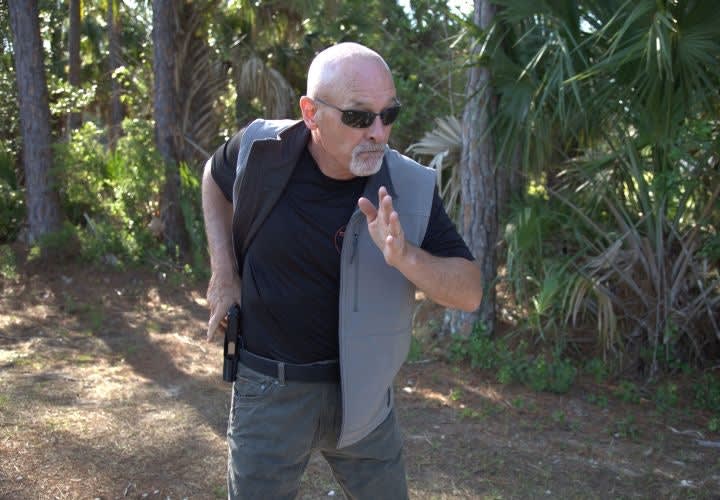Your draw stroke should be the same physical action regardless of the contact distance involved. Keep in mind, a fast draw is not spastic-looking muscle manipulations; it is an exercise in lack of unnecessary motion...better known as smoothness. While any number of body locations can be used to carry or conceal a handgun, strong-side belt-mounted carry will always be the most physiologically efficient, as the gun is mounted on the same side as the shoulder, arm, elbow, and hand that will draw and direct it to the threat.
Consider the physical action required to draw a handgun. The shoulder rotates, the elbow folds, and the hand travels to the handgun, wrapping around it in a solid shooting grip (while releasing any retention devices) that must not vary from the moment it is drawn until it is returned to the holster. It should also be understood this must take no more than two seconds regardless of what position the body is in, which could be anywhere from standing to kneeling to supine or anywhere in between. Additionally, the shooter might be involved in intense open hand combat as the draw occurs, which makes me wonder why anyone would want to place their service pistol anywhere other than their strong side.
In close confines, reaching across the body to a shoulder or crossdraw rig places the arm in a position it can be easily be fouled by an attacker. Also, the gun is pointed in a direction that is potentially more accessible to the attacker than the wearer.
The Critical Space Draw is an essential skill much like grip, trigger control, or body position. It should also be understood the draw should be the same regardless of the distance to your attacker. It doesn't matter if the critical space is 2.5 feet or 25 yards.
Training to Protect Bystanders











